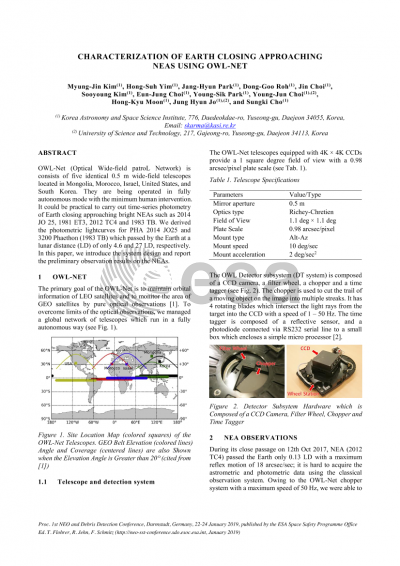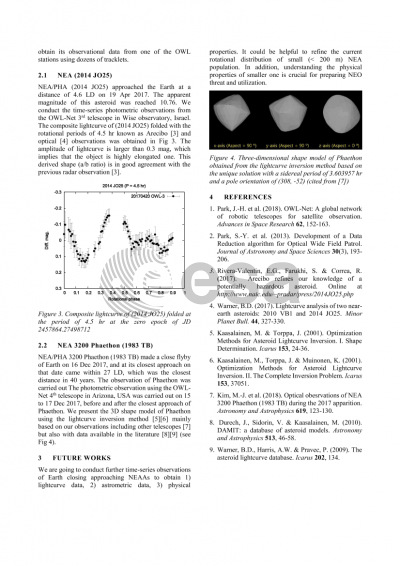Document details

Abstract
OWL-Net (Optical Wide-field patroL Network) is consists of five identical 0.5 m wide-field telescopes located in Mongolia, Morocco, Israel, United States, and South Korea. The primary objective of OWL-Net is to track Korean domestic low Earth orbit satellites. In addition, it would be practical to carry out time-series photometry of Earth closing approaching bright NEAs such as 2014 JO 25, 1981 ET3, 2012 TC4 and 1983 TB. During its close passage on 12th Oct 2017, NEA 2012 TC4 passed the Earth only 0.13 LD with a maximum reflex motion of 18 arcsec/sec; it is hard to acquire the astrometric and photometric data using the classical observation system. Owing to the OWL-Net chopper system with a maximum speed of 50 Hz, we were able to obtain its observational data from one of the OWL stations using dozens of tracklets. We also derived the photometric lightcurves for PHA 2014 JO25 and 3200 Phaethon (1983 TB) which passed by the Earth at a lunar distance (LD) of only 4.6 and 27 LD, respectively. In this paper, we introduce the system design and report the preliminary observation results on NEAs.
Preview



